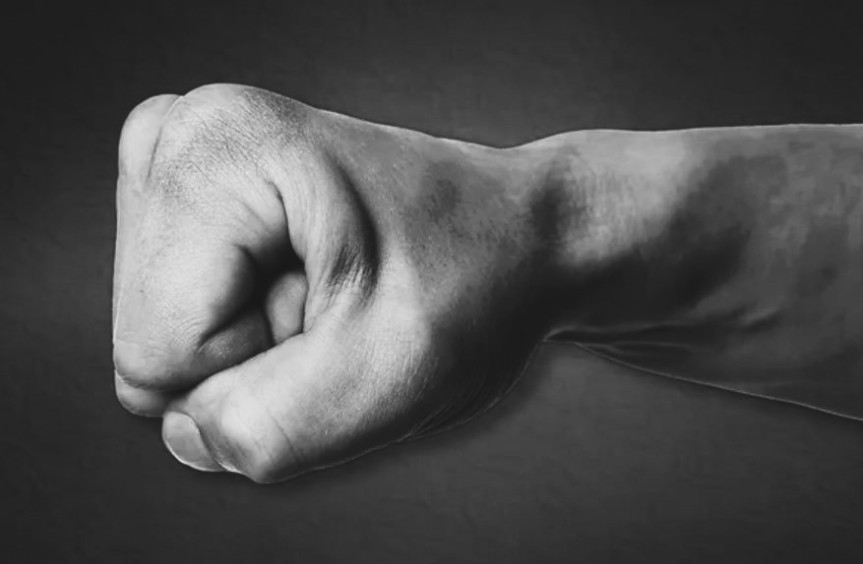
Something few people know about me is that I’ve practiced martial arts, in one form or another, since 1983. I’ve trained through ups and downs, in sickness and in health, traveling, on my own or in a dojo, in various countries, with weapons and open hands, in good shape and sick, healthy and injured, and with people from every ethnicity, creed, culture, and economic standing, good, bad, and ugly. I don’t talk or write about it very often because, honestly, what’s there to say? Still, this time, I might have something.
Growing up, I studied Tang Soo Do karate in the Moo Duk Kwan with a legendary master, where I trained with members of the local SWAT team, off-duty Marines, and a wide variety of people from all over the world. I honor that tradition, but I have also studied Choi Li Fut, Shotokan, Vo Lam Kung Fu, Chin Na, Taijutsu, and western boxing. I now study a style called Kaito Gakko, which incorporates karate, jujitsu, and other practices.
Throughout all these years, I’ve had times when I felt I was very proficient and other times when I felt ashamed of my inadequacies. I also learned to set all those feelings aside. As “Dai E Zenji’s Vow for Awakening” puts it, “My only prayer is to be firm in my determination to pursue the study of truth, so that I may not feel weary however long I have to apply myself to it . . . to be free from illnesses and to drive out both depressed feelings and lightheartedness.”
Feeling good about yourself can be wonderful. And feeling bad about yourself can be horrible. But ultimately these are fleeting states of mind, conditions equivalent to each other, and not that different from illnesses. They distract you from what’s really going on within you and beyond you. Accepting this is the substance of mindfulness and is integral to martial arts and to Zen, which is something I also study, among other things.
To be honest, I am not a great martial artist and never have been. At best, I’m mediocre, especially relative to some of the highly gifted athletes from whom I’ve had the benefit of learning. If my mediocrity were relevant to anything, it might bother me. All that’s relevant is that I continue to practice, day in, day out, because there is only one person on my path: me. The path (the training) is endless. There is nothing to accomplish and there is always more to learn. There is no trophy that means anything, no organizational belt rank that ultimately signifies a definitive stopping point. I’ll never “get it done” or “have it handled.”
Rather, martial arts training is a way of life, a stance toward every moment, such that body and mind are brought together as fully as possible in the here and now. The body and mind are constantly changing. So this training demands continual focus and dedication. Hence, the “do,” the Way. But none of it is remarkable. As Jack Kornfield writes, in After the Ecstasy, the Laundry:
Enlightenment flowers not as an ideal, but in the miraculous reality of our human form, with its pleasures and pains. No master can escape this truth, nor does enlightenment make the vulnerability of our body go away. The Buddha had illnesses and backaches. Sages like Ramana Maharshi, Karmapa, and Suzuki Roshi died of cancer in spite of their holy understanding. Their example shows we must find awakening in sickness and in health, in pleasure and in pain, in this human body as it is.
There is no escaping the fact of our mortality, of our finitude. But practicing martial arts isn’t about escaping. This is why, when I see overheated, arrogant MMA fighters putting down traditional martial arts, I wonder about values and physical limitations. One day, these MMA practitioners, as great as they may be, will get old and will no longer be able to dish out the same beatings to others (and to themselves). What then? Does the training stop? Is it time to hang up the gloves and get a soft serve on the way to the orthopedic specialist? When age and injuries have broken your body, is that when the introspection can start? In my opinion, that would be a very limited way of practicing.
A teacher of mine recently described karate as a form of “moving prayer.” I like that a lot. Prayer is about hope. It’s about putting your best intentions into words and giving them a more tangible form. If you believe in a higher power, it’s about affirming that connection and is therefore an act of faith made with your body and mind.
So I thought I’d write this (very different) piece just to say one thing: no matter who you are, no matter your body type or physical limitations, age, gender, ethnicity, or financial status, you can start studying martial arts—even if it’s at a corny storefront dojo in the mall or in your basement with a YouTube video. Start from where you are. You don’t have to be great. Set aside your egotistical perfectionism (something we all have to a degree) and just start.
I write this in memory of a fantastic martial artist and Tang Soo Do instructor, Master Lloyd Francis, who had a formative influence on me when I was very young, and in great respect and appreciation for Uncle Bruce Keaulani, my current teacher.
